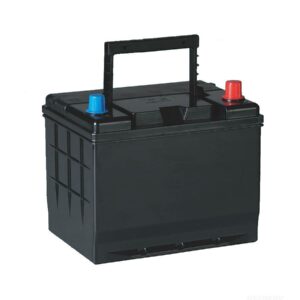What Makes a LiFePO4 Automotive Battery Charger Compatible?
LiFePO4 automotive battery chargers must match voltage, current, and communication protocols of the battery. Compatibility ensures safe charging, prevents damage, and maximizes lifespan. Key factors include voltage alignment (12V, 24V, 48V), charging stages (bulk, absorption, float), and smart features like temperature compensation. Always verify manufacturer specifications to avoid mismatches.
How do you properly charge LiFePO4 car starter batteries?
How Do LiFePO4 Chargers Differ from Other Lithium-Ion Chargers?
LiFePO4 chargers use lower voltage thresholds (3.6V per cell vs. 4.2V for Li-ion) to prevent overcharging. They employ precise constant-current/constant-voltage (CC/CV) profiles and lack trickle charging, which LiFePO4 batteries don’t require. Chargers for other lithium chemistries risk thermal runaway or capacity loss if used incorrectly.

What Are the Critical Compatibility Factors for LiFePO4 Chargers?
Voltage matching (±0.5V tolerance), charge current (0.2C–1C of battery capacity), and communication protocols (CAN bus, RS485) are critical. Temperature sensors and adaptive algorithms adjust for environmental conditions. Chargers must support lithium-specific modes—lead-acid modes will undercharge or degrade LiFePO4 cells.
Which Charging Stages Optimize LiFePO4 Battery Longevity?
Three-stage charging is ideal: bulk (constant current to 80% capacity), absorption (constant voltage until 95%), and float (maintenance voltage). Avoid equalization stages used for lead-acid batteries. Some advanced chargers include “storage mode” to maintain 50% charge during inactivity, reducing calendar aging.
How long does it take to charge a LiFePO4 car starter battery?
Can You Use a Lead-Acid Charger on LiFePO4 Automotive Batteries?
Never use lead-acid chargers long-term—they overvoltage LiFePO4 cells, causing premature failure. Emergency use requires manual voltage cutoff at 14.2V (12V systems). Lead-acid chargers lack lithium-specific safety protocols and may trigger internal battery management system (BMS) shutdowns.
What Smart Features Do Modern LiFePO4 Chargers Offer?
Bluetooth/Wi-Fi connectivity enables real-time monitoring via apps. Multi-chemistry support (with lithium prioritization), reverse polarity protection, and diagnostic fault codes are standard. High-end models feature grid-independent solar compatibility and vehicle-to-load (V2L) discharging for auxiliary power.
Advanced chargers now integrate machine learning to analyze charging patterns. For example, some models automatically adjust current based on historical battery performance data. Solar-ready chargers with MPPT (Maximum Power Point Tracking) optimize energy harvest from panels, while dual-input designs allow simultaneous AC/DC charging. Waterproof (IP67-rated) units are ideal for off-road vehicles, and CAN bus integration enables seamless communication with modern automotive ECUs.
How Does Temperature Affect Charger Compatibility?
LiFePO4 charging ceases below 0°C (32°F) to prevent plating. Chargers with thermal sensors reduce current by 30% above 45°C (113°F). Arctic-grade chargers include battery warmers; desert models use liquid cooling. Always check operational temperature ranges in specs.
Extreme temperatures impact both charging efficiency and safety. In cold climates, some chargers preheat batteries using <1A trickle current before initiating full charging. For high-temperature environments, active cooling systems maintain optimal cell temperatures during rapid charging. Industrial-grade chargers often include weatherproof enclosures and humidity sensors to prevent condensation damage. Always match the charger’s temperature compensation range (-20°C to +60°C for premium models) with your geographic conditions.
Are Universal Chargers Safe for LiFePO4 Automotive Use?
Most universal chargers lack lithium-specific profiles. Those labeled “LiFePO4-compatible” must be tested with your battery’s BMS. Risks include incorrect termination voltages and missing cell-balancing functions. Brand-matched chargers are safest.
| Feature | Universal Charger | LiFePO4-Specific Charger |
|---|---|---|
| Voltage Accuracy | ±1.0V | ±0.2V |
| BMS Communication | Basic | Full Protocol Support |
| Temperature Sensors | Optional | Standard |
What Are the Consequences of Using Incompatible Chargers?
Overcharging causes electrolyte decomposition and swelling. Undercharging leads to sulfation-like capacity loss. Repeated BMS interventions shorten its lifespan. In extreme cases, thermal events may occur despite LiFePO4’s inherent stability.
How to Verify Charger-Battery Compatibility Before Purchase?
Cross-reference charger output (voltage/current) with battery specs. Confirm communication protocol alignment—Bluetooth handshaking isn’t universal. Check for UL/TÜV certifications. Consult manufacturer compatibility lists; third-party chargers often publish approved battery models.
Expert Views
“LiFePO4 compatibility isn’t just voltage—it’s about syncing the charger’s logic with the battery’s BMS. At Redway, we’ve seen 37% longer cycle lives when using chargers with adaptive learning algorithms that track cell divergence.”
— Senior Engineer, Redway Power Systems
Conclusion
Choosing a LiFePO4-compatible charger requires attention to voltage, current, communication protocols, and environmental factors. Prioritize brand-matched systems with certified safety features. Smart chargers with real-time adjustments offer the best performance and longevity.
FAQs
- Can I charge LiFePO4 with a regular lithium-ion charger?
- No—LiFePO4 requires lower voltage limits. Using standard Li-ion chargers risks overvoltage damage.
- Do LiFePO4 batteries need a special charger?
- Yes—chargers must have LiFePO4 voltage profiles and communication with the battery’s BMS.
- How long does a LiFePO4 automotive battery take to charge?
- With a 1C charger, 1–2 hours for 80% capacity; full charge takes 3–4 hours including absorption phase.
